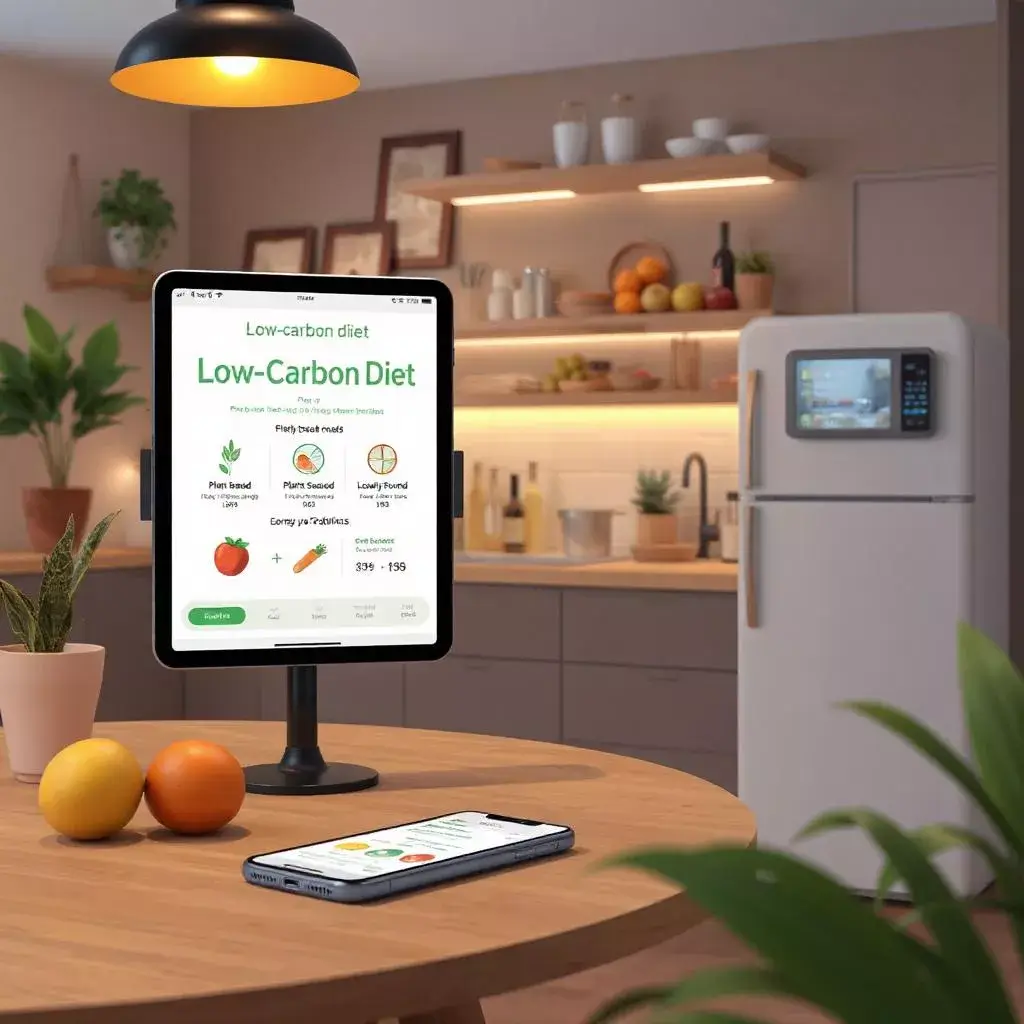1. Introduction
- A low-carbon diet is one of the most effective ways to reduce your personal carbon footprint and contribute to environmental sustainability. With food production accounting for nearly 30% of global greenhouse gas emissions, making eco-conscious dietary choices can significantly reduce environmental impact.
- This article explores the benefits of a low-carbon diet and how technology can assist in making sustainable food choices.
2. The Environmental Impact of Food Production
Greenhouse Gas Emissions: Agriculture, particularly livestock farming, contributes to methane and CO2 emissions.
Deforestation: Land clearing for crops and grazing results in habitat loss and increased carbon release.
Water Consumption: Meat and dairy industries use vast amounts of water, straining global resources.
Food Waste: A large percentage of food is wasted, increasing methane emissions from landfills.
Transportation Impact: Importing foods from distant locations adds to fuel emissions and environmental degradation.
3. How a Low-Carbon Diet Helps the Environment
Reduces Carbon Emissions: Lower reliance on meat and dairy significantly cuts emissions.
Saves Water: Plant-based foods generally require less water to produce.
Supports Biodiversity: Sustainable food choices prevent habitat destruction.
Minimizes Waste: Conscious consumption and portion control reduce food waste.
Promotes Soil Health: Sustainable farming practices enrich soil quality, reducing chemical reliance.
4. The Role of Technology in Sustainable Eating
Food Carbon Footprint Calculators: Apps like FoodPrint and Giki analyze food choices for their environmental impact.
Meal Planning Apps: Platforms like Mealime and Eat This Much assist in creating eco-friendly meal plans.
AI-Based Nutritional Guidance: AI-powered diet apps recommend plant-based alternatives.
Sustainable Grocery Shopping Tools: Barcode scanners like Yuka provide sustainability ratings.
Food Waste Reduction Apps: Apps such as Too Good To Go connect users with surplus food at lower costs.
5. Choosing Plant-Based and Sustainable Foods
Legumes and Beans: High-protein, eco-friendly alternatives to meat.
Whole Grains: Require less processing and energy for production.
Seasonal and Local Produce: Reduces emissions from transportation.
Plant-Based Dairy Alternatives: Almond, oat, and soy milk have lower carbon footprints.
Sustainable Seafood: Choose responsibly sourced fish to avoid overfishing.
6. Reducing Meat and Dairy Consumption
Meatless Mondays: Start with one vegetarian day per week.
Substituting with Plant Proteins: Tofu, lentils, and chickpeas provide ample nutrition.
Gradual Reduction Strategy: Slowly decrease meat intake for long-term change.
Exploring Alternative Meat Products: Brands like Beyond Meat and Impossible Foods offer plant-based meat substitutes.
Dairy-Free Cooking: Use plant-based yogurts, cheeses, and butter.
7. Smart Grocery Shopping for a Low-Carbon Diet
Buying in Bulk: Reduces packaging waste.
Using Digital Shopping Lists: Prevents impulse purchases and food waste.
Opting for Minimal Packaging: Choose brands with biodegradable or recyclable packaging.
Supporting Local Farmers: Reduces food transportation emissions.
Avoiding Processed Foods: Ultra-processed items require high energy production.
8. Food Waste Reduction with Technology
Smart Fridges: AI-based food monitoring prevents spoilage.
Expiry Date Trackers: Apps like Nosh send alerts for expiring food.
Composting Apps: Guides like ShareWaste help turn waste into compost.
Portion Control Assistance: Apps suggest correct portion sizes to reduce leftovers.
Community Food Sharing: Platforms like OLIO connect users to share excess food.
9. Cooking Methods That Lower Carbon Footprint
Using Energy-Efficient Appliances: Induction stoves consume less energy.
Batch Cooking: Saves energy by reducing cooking frequency.
Pressure Cooking: Uses less time and energy than traditional methods.
Solar Cooking: Solar ovens harness renewable energy.
Cold Meal Alternatives: Salads and raw food dishes minimize energy use.
10. The Connection Between Digital Tools and Sustainable Dining
| Technology | How It Helps | Example Apps |
| Carbon Footprint Trackers | Calculates food’s environmental impact | FoodPrint, Giki |
| Sustainable Grocery Apps | Helps find eco-friendly brands | Yuka, Buycott |
| AI Meal Planning | Generates sustainable meal ideas | Mealime, Forks Over Knives |
| Food Waste Reduction | Connects users with surplus food | Too Good To Go, OLIO |
| Expiry Date Tracking | Sends reminders for perishable foods | Nosh, Fridge Pal |
11. The Cost vs. Savings of a Low-Carbon Diet
Initial Adjustments: Switching to organic and plant-based foods can seem expensive initially.
Long-Term Benefits: Savings on medical bills due to healthier eating habits.
Lower Grocery Costs: Legumes and grains cost less than meat and dairy.
Energy Savings: Less cooking time for plant-based meals means lower energy bills.
Government Incentives: Some regions offer tax breaks for sustainable food choices.
12. Challenges and Considerations
Accessibility Issues: Not all regions have easy access to plant-based foods.
Nutritional Balance: Ensuring adequate protein and vitamin intake.
Changing Habits: Gradual shifts make sustainable eating easier.
Cost Barriers: Some eco-friendly options are pricier.
Awareness and Education: Learning about sustainable eating is essential.
13. Future of Low-Carbon Diets and Tech Advancements
AI-Generated Diet Plans: Personalized meal recommendations based on sustainability.
Lab-Grown Meat: A lower-carbon alternative to traditional meat.
Blockchain for Food Transparency: Tracks the carbon footprint of food products.
Vertical Farming: Sustainable, space-efficient food production.
Advanced Food Preservation: Reducing waste with smart storage technology.
14. Conclusion
A low-carbon diet is a powerful way to combat climate change and improve personal health. By using digital tools and sustainable eating habits, individuals can significantly reduce their carbon footprint. From meal planning apps to AI-powered grocery shopping assistants, technology offers numerous ways to make environmentally friendly food choices easier and more accessible.
Disclaimers
Carbon footprint reductions vary based on individual dietary choices and location.
Some digital tools may require subscriptions for full functionality.
Availability of sustainable food options depends on local infrastructure.
Nutritional needs should be considered when reducing meat and dairy intake.
Technology-assisted food choices do not replace professional dietary advice.
Author: Dipika Kumari
Publication Date: 27-03-2025
Email: [email protected]
